NFS: Underground 2
Publisher: Electronic ArtsWe have used The Need For Speed: Underground 2 here to represent a typical driving simulator - it's based on the DirectX 9.0 API, and makes use of lots of DirectX 9.0 features, including motion blur and light trails. Anti-Aliasing was controlled from inside the game, while Anisotropic Filtering was controlled via the driver control panel.
We used a 3-lap race on the "Parkade Track 1" Street-X circuit with three opponents for our manual run through. The circuit is a fairly high-speed one, but contains lots of corners - it makes good use of motion blur and light trails.
Below is a table of the best-playable settings that we found best for each video card configuration. In this title, we found that 28 to 30 frames per second minimum and a target of 38 frames per second (or higher) for the average frame rate delivered smooth and fluid game play.
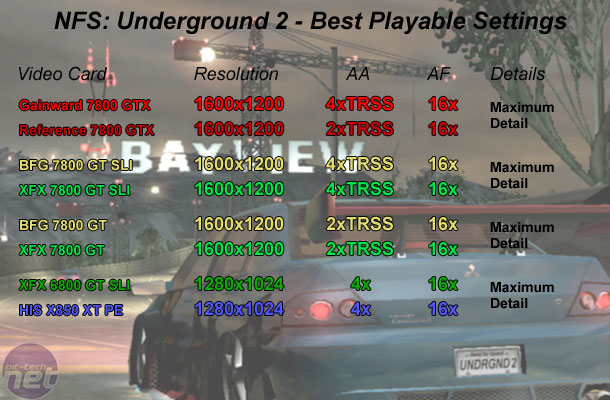
Meanwhile, the X850 XT PE turned out to be slower than the single 7800 GT's - it was only able to deliver smooth game play at 1280x1024 4xAA 16xAF. These were the same settings as what we found best for the XFX 6800 GT SLI. However, the gaming experience was much better on the single Radeon X850 XT PE - both minimum and average frame rates were higher than achieved on the XFX 6800 GT SLI.
When we enabled SLI on both pairs of GeForce 7800 GT's, we found that we were able to attain a silky smooth gaming experience with everything turned on at 1600x1200. The result of adding a second card for SLI was that we could increase the Anti-Aliasing setting from 2xTRSS AA up to 4xTRSS AA, thus making the scenery and car look a lot easier on the eye.
Both the BFGTech and XFX 7800 GT SLI configurations were faster than the single supercharged Gainward 7800 GTX. However, unlike the single card configurations, we found that the XFX 7800 GT SLI was notably smoother than the BFGTech 7800 GT OC SLI configuration. We saw a 5 fps increase in minimum frame rate, while also seeing the average frame rate increase by nearly 3 fps.

MSI MPG Velox 100R Chassis Review
October 14 2021 | 15:04


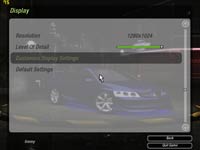
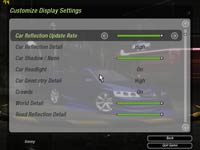
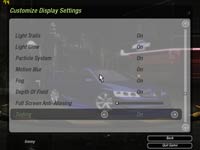
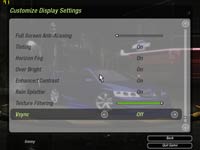




Want to comment? Please log in.